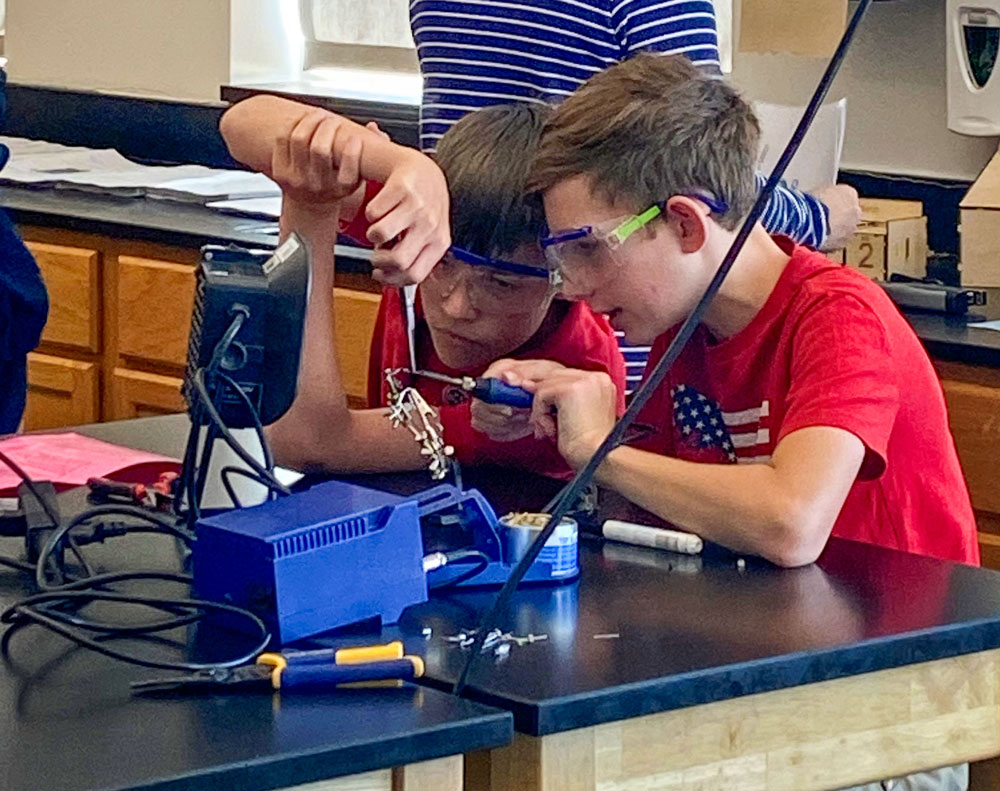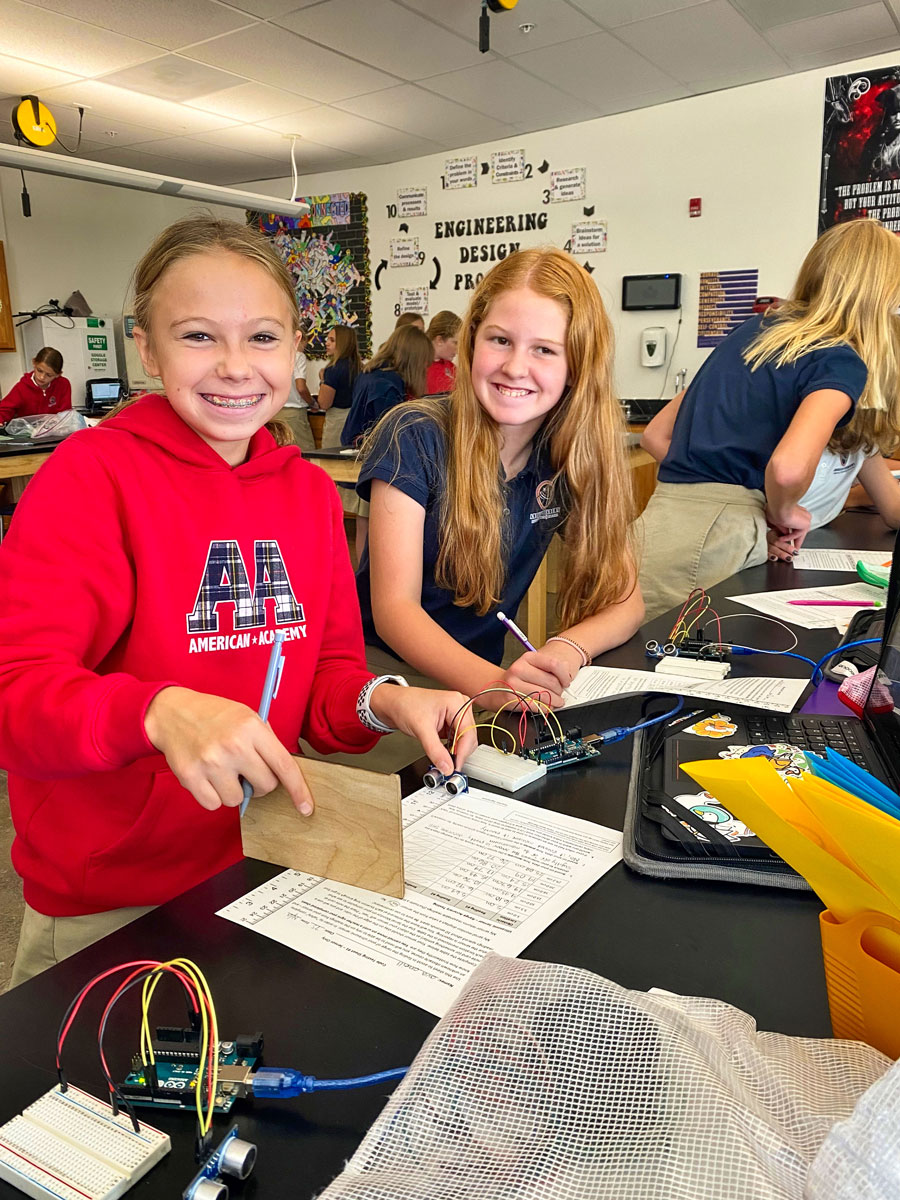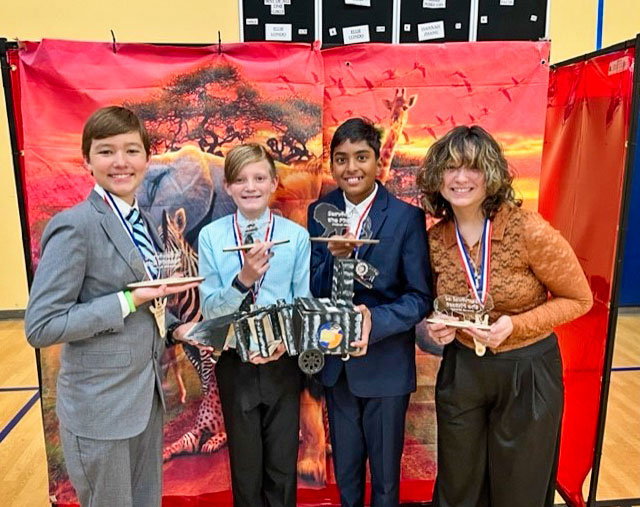Robots of the future

AA students Daniel Forte (left) and Erik Zitzlsperger (right), concentrate on their soldering project in STEM in preparation for their final project.
Seventh grade STEM students from the three American Academy (AA) campuses applied the technical skills and engineering knowledge learned throughout the trimester to create functioning “animal” robots. In teams of four, the students presented their final projects to professional software developers and coders at AA’s annual STEMApalooza held in November 2022 at the campus in Castle Pines.
Each team was required to use LED lights, servo motors (an actuator that provides control, velocity and acceleration) and an ultrasonic sensor in their circuitry. Parameters for distance were also set depending on the animal robot being safe, threatened or in danger.

Pictured right: Ava O’Neill (left) and Delaney Baer (right) assess the ultrasonic sensor used in their robot to measure distance,
critical for the functioning of their final project.
The students superseded what was required of them. A majority of the robots had extras such as buzzers, LCD screens, LED strips, and mini servo motors that moved parts of the animal’s body.
Each team had the opportunity to show the judges and teachers how their robots functioned followed by a question and answer session. Students were given awards for different categories of achievement: best overall robot chosen by the judges; best design chosen by sixth and eighth grade peers; and excellence in coding.

From left to right; Eli Jiminez, Jaxson Mills, Dharmik Meruva, and Carys Johnson won the competition with their snake robot.
Eli Jiminez, Jaxson Mills, Dharmik Meruva, and Carys Johnson won the entire competition with their snake robot.
The AA STEM teacher Amy McKenzie said that in addition to everything the seventh graders learned, working as a team was paramount. “Teaching students soft skills – growth mindset, interpersonal communication, getting along with others, sharing ideas, conflict resolution, active listening – qualifies as one of the most important things we can do as teachers.” She added that it’s vital for students to “practice navigating the minefield of cooperative learning” as they prepare for adulthood.
McKenzie is immensely proud of the students and their willingness to take risks, as well as their creative spirits. Learning how to code their robots and the challenge of turning two-dimensional wood into a three-dimensional robot was the culmination of everything learned in class. McKenzie congratulates all the winners and all her students on projects well done.
By Julie Matuszewski; photos courtesy of Amy McKenzie